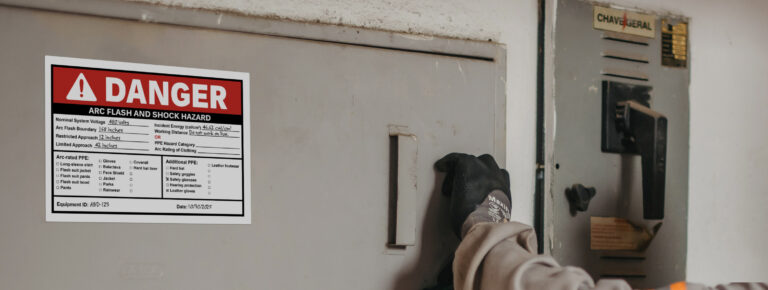
Thoughts from a Safety Manager on GHS Compliance
Estimated reading time: 6 minutes
Interview with David Herberling, Quality Metallurgist and Safety Manager
We spoke with David Herberling, a Quality Metallurgist and Safety Manager at a large metal supply service center in Ohio. He discussed proactively seeking GHS label solutions for “down-packed” secondary container labeling.
According to Herberling, down-packing from 55-gallon drums to smaller containers with spray nozzles was necessary. This process involves spraying oils, solvents, and lubricants onto product surfaces and production line equipment for flat-rolled steel. The right GHS labeling options can make operations safer and simpler. They help manufacturers, distributors, and compliant end users streamline their processes.
In this article, we’ll hear more from Herberling and explore how the right GHS labeling products and software can boost efficiency.
More articles you might like
- Label it Right: 4 Quick Tips for Safer Secondary Containers
- GHS Label Requirements for Safety and Compliance
- 5 Easy Tips to Avoid the Most Common OSHA Violations
Types of chemicals that require GHS labels
End users must comply with GHS labeling for chemical formulations purchased in bulk containers to save costs. For example, barrels of industrial cleaner are often transferred to smaller “down-packed” secondary containers, such as spray bottles, for portable use.
Furthermore, containers requiring compliant GHS labels can vary in size, from 55-gallon drums down to tiny test vials. In an industrial setting, chemical formulations that could require GHS labels cover a wide range, including:
- Industrial primers, coatings, and sealants
- Lubricants such as greases and cutting oils
- Rust removers
- Acid-, alkaline-, and solvent-based cleaners
- Degreasers and surfactants
- Disinfectants and sanitizers
Finding the right durable GHS labels for compliance
“Label durability is important to us, so we turned to Avery’s UltraDuty GHS Chemical Labels,” says Heberling. As a matter of fact, Avery GHS labels are industrial-grade and highly durable. They are resistant to chemicals, tears, and abrasions. The marine-grade adhesive is waterproof and meets BS5609 durability standards for marine and extreme environments.
Designing compliant GHS labels using Avery label software
Just as important to Herberling, if not more so, was the ease of use of the online label design software. It’s available on the Avery website at no cost, with extra GHS tools available by subscription. All in all, Avery Design and Print Online (ADPO) allows users to create and print their own chemical safety labels from predesigned templates.
Herberling liked that his team could create on-demand labels step-by-step at their desks. They could also create GHS labels and HMIS hybrid labels capable of satisfying both systems. Most of the team found the process intuitive, resembling creating an office document from predesigned templates.
Moreover, with the Avery GHS Wizard® subscription service, users can access advanced GHS tools. This is in addition to the standard label design tools available in the ADPO software.
“What I really needed was the chemical name, hazards, pictograms, and precautions for internal company use,” says Herberling. “I like that when I entered the CAS number for the main chemical ingredient from the safety data sheet, the GHS Wizard filled these in. It allowed me to modify them to suit our situation, as appropriate. Most of the work was done for me.”
Combining information for GHS labels
Free features in ADPO include customizable text as well as options to add logos, images, sequential numbering, and a barcode generator. On top of that, the GHS Wizard service automatically fills in product identifiers, signal words, hazard statements, precautionary statements, and pictograms for GHS labeling.
All information can be reviewed and edited. ADPO also supports adding English and Spanish statements for bilingual GHS labels. Moreover, no download is required as the software operates from the Avery website. Users can securely save HMIS, NFPA, and GHS labels online or on a computer.
Of course, the software can create other safety labels as well, such as OSHA, ANSI, and DOT labels, using standard features. “The ability to convey needed GHS label info clearly, as well as combine it with other systems like HMIS and NFPA, can be helpful when hybrid systems are required,” says Howell. “Software with modifiable templates like Avery’s allows you to quickly create GHS labels for your specific product in the quantities you need at the time you need them.”
Facility-wide GHS label compliance in a couple hours
According to Heberling, relying on Avery software with GHS tools along with the appropriate GHS labels enabled his metal supply service center to become GHS compliant rapidly. “Once we had the labels, we complied with GHS requirements within a couple of hours,” says Heberling. “I printed what we needed on a desktop printer, and we affixed the labels to painted secondary containers with spray nozzles at the production lines. What initially looked like a big project actually turned out to be quite simple.”
Compliant while improving safety on the production line
Since then, the GHS labels in Herberling’s facility have not only passed a corporate audit but have also enhanced the safety of production lines and employees. Both in theory and practice, GHS label compliance improves safety. It does so by reducing the risk of chemical misidentification and mishandling. This improvement occurs across the supply chain. It affects everyone, from the manufacturer to the end user., both domestically and internationally.
“While GHS label compliance was mandatory, so was passing all safety audits,” says Heberling. “The real bottom line, however, is that becoming GHS label-compliant has improved our safety at the production lines. Now we are clearly displaying chemical data to prevent mistakes of misidentification, along with other necessary information.”
Conclusion
In conclusion, David Herberling’s proactive approach to implementing GHS label solutions has significantly enhanced both compliance and safety at his metal supply service center. By leveraging durable Avery GHS labels and user-friendly design software, Herberling and his team streamlined the labeling process, ensuring that all secondary containers are properly marked with essential chemical information. This initiative not only met regulatory requirements but also passed rigorous corporate audits and, most importantly, improved the safety and efficiency of the production line. Herberling’s experience underscores the value of adopting robust labeling systems to safeguard workers and optimize operational workflows.
Check out these articles on our blog that cover more safety topics, and join the conversation on LinkedIn.
Please note, the contents of this article and related articles on avery.com are for informational purposes only, are general in nature, and are not intended to and should not be relied upon or construed as a legal opinion or legal advice regarding any specific issue or factual circumstance.



